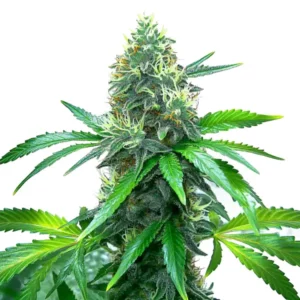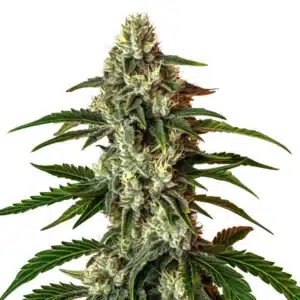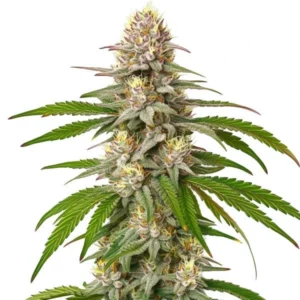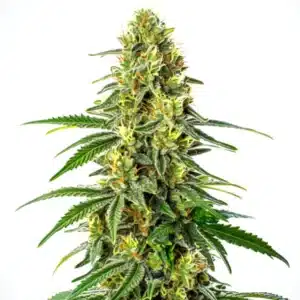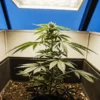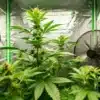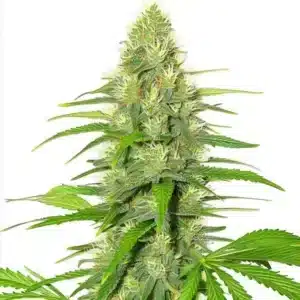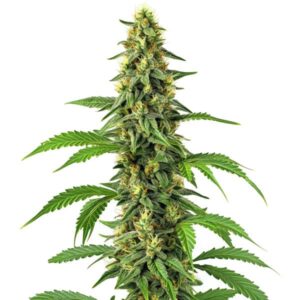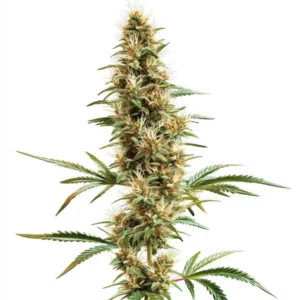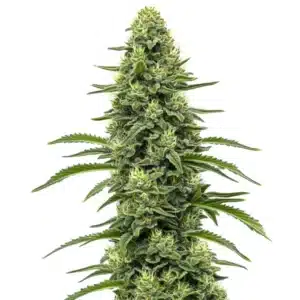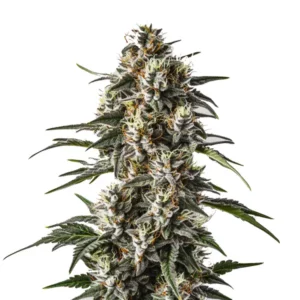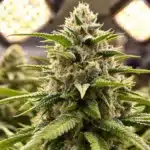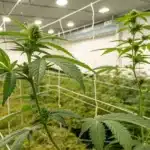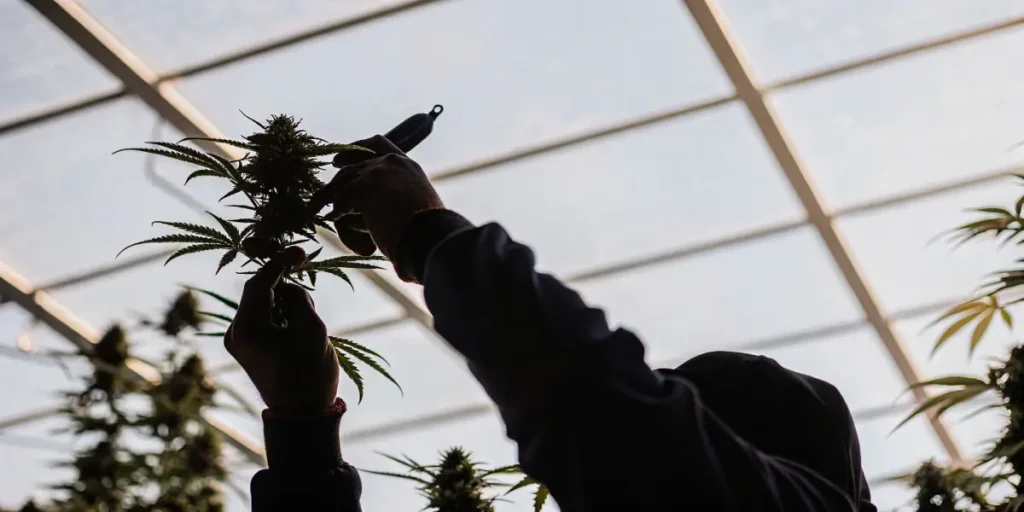
Cannabis Node Management Techniques
Managing the nodes of your cannabis plants isn’t just for the pros. It’s a fantastic way to boost your yield and enhance plant health. Nodes are where leaves and branches grow from the stem. By applying cannabis node management techniques, you can control how your plant develops and ensure it gets enough light and air.
Think of nodes as the building blocks of your plant. Proper cannabis node management techniques can help you create a plant structure that maximizes light exposure, which is crucial for photosynthesis. The more light your plant absorbs, the more energy it has to produce bigger buds.
Recommended Strains
Blue Dream
|
|
THC | 17% - 24% (Medium) |
|
|
Type | Feminized |
|
|
Yield | High |
|
|
Phenotype | 50% Indica / 50% Sativa |
OG Kush
|
|
THC | 20% - 24% (Medium) |
|
|
Type | Feminized |
|
|
Yield | Medium |
|
|
Phenotype | 55% Indica / 45% Sativa |
Let’s dive into the world of cannabis node management. Whether you’re just starting out or you’re a seasoned grower, understanding how to manipulate nodes can significantly impact your harvest. From simple pinching to more advanced techniques like topping and low-stress training, there’s a method for every grower.
Optimal Cannabis Node Spacing Techniques
Spacing is key when it comes to managing nodes. Proper spacing ensures your plant receives adequate sunlight and airflow. If nodes are too close together, it can lead to shading and poor air circulation, which can create a breeding ground for mold and pests.
To achieve optimal node spacing, consider the strain you’re growing. For example, the Blue Dream strain is known for its tall and bushy nature. You’ll want to space nodes to allow for its expansive growth pattern. Regular pruning and training can help maintain the ideal distance between nodes.
Incorporating optimal cannabis node spacing techniques is essential for maintaining plant health. By ensuring nodes are adequately spaced, you facilitate better light penetration, which is crucial for robust growth. Additionally, proper spacing reduces the risk of pest infestations and diseases, as it allows for better air movement through the plant.
Adopting a strategic approach to node spacing involves understanding the growth habits of your specific cannabis strains. Some strains may require more frequent adjustments to node spacing due to their growth patterns. By keeping a close eye on how your plants develop, you can make timely interventions that support healthy and vigorous growth.
Promos & Deals
Best Practices for Cannabis Node Pruning
Pruning is about removing some parts of the plant to promote better growth elsewhere. It’s an essential part of cannabis node management techniques. By cutting away unnecessary leaves or small buds, you redirect the plant’s energy to more productive areas.
For example, the OG Kush strain can benefit greatly from strategic pruning. This strain tends to develop dense foliage, so removing lower leaves can improve airflow and light penetration. Regular pruning sessions can make a huge difference in the health and yield of your plants.
Implementing best practices for cannabis node pruning involves more than just trimming away excess foliage. It’s about understanding the growth cycle of your plant and strategically removing parts that hinder growth. This method ensures that your plant’s energy is directed towards developing larger and more potent buds.
Timing is crucial in pruning. The best practices for cannabis node pruning often recommend conducting these activities during the vegetative stage when the plant can recover quickly. By maintaining a consistent pruning schedule, you not only improve the overall health of your plants but also set the stage for a more productive flowering phase.
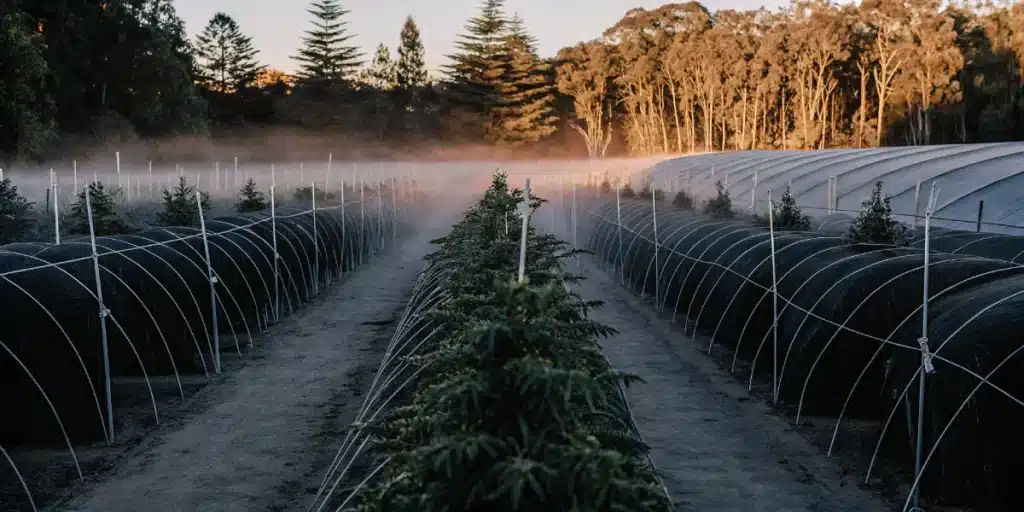
Cannabis Node Management for Increased Yield
Managing nodes effectively can lead to a significant increase in yield. This involves a combination of pruning, training, and ensuring optimal node spacing. For first-time growers, it can be helpful to start with a strain like White Widow, known for its forgiving nature and robust growth.
The key is consistency. Maintaining a weekly routine of checking node development and making adjustments as needed can lead to healthier plants and larger harvests. Regularly assess how your plant responds to your interventions and adjust your techniques accordingly.
Cannabis node management for increased yield is not just about quantity but also quality. By focusing on node management, you enhance the plant’s ability to produce denser and more resinous buds. This ultimately improves the overall quality of your harvest, making it more valuable and satisfying.
Integrating a holistic approach that includes optimal cannabis node spacing techniques and best practices for cannabis node pruning ensures that your plant can reach its full potential. By understanding your plant’s growth patterns and adjusting your techniques accordingly, you can achieve impressive results in both yield and quality.
Advanced Cannabis Node Training Methods
For those looking to take their growing skills to the next level, cannabis node management techniques can be highly beneficial. Methods like topping, fimming, and low-stress training (LST) focus on manipulating the plant’s growth patterns for better outcomes.
Topping involves cutting the top of the plant to encourage bushier growth, while fimming is a similar technique but leaves some parts of the top intact. Both methods can increase the number of main colas, leading to more significant yields.
Advanced cannabis node training methods require a deeper understanding of plant physiology and growth responses. These methods, including techniques like super cropping and the screen of green (SCROG), allow growers to manipulate and maximize plant potential. By applying stress in controlled ways, these techniques encourage plants to grow in more favorable patterns.
While these methods are more complex, they offer significant advantages in terms of controlling plant shape and size. This control results in a more efficient use of grow space and resources, ultimately leading to more substantial and higher quality yields. Experimenting with these techniques can be a rewarding experience for dedicated growers willing to invest the time and effort.
Cannabis Plant Node Development Strategies
Developing a strategy for node management involves understanding your plant’s growth cycle and adapting your techniques accordingly. During the vegetative stage, focus on creating a strong structure by managing node spacing and pruning.
As the plant transitions to the flowering stage, your strategy should shift towards maintaining the structure and ensuring light and air reach every part of the plant. This is especially crucial for strains like OG Kush, which can become quite dense.
Effective cannabis plant node development strategies rely on a tailored approach to each strain’s unique characteristics. By observing how different strains respond to node management, you can refine your techniques to better suit your growing conditions and goals. This adaptability is key to unlocking the full potential of your plants.
Incorporating a mix of basic and advanced cannabis node management techniques allows for a more comprehensive approach to cultivation. By combining these strategies, you can create an optimized environment that supports strong growth and maximizes yield across various strains and growing setups.
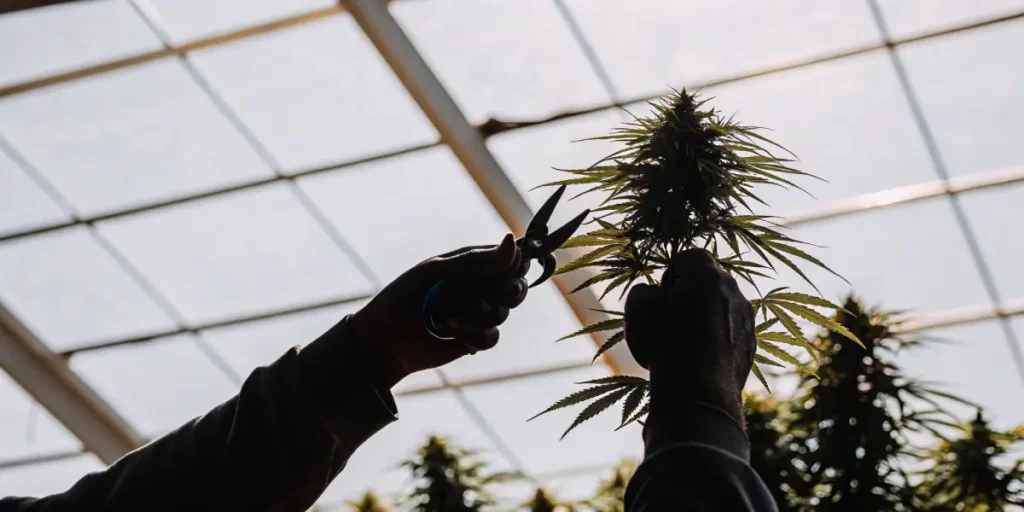
FAQs
What are the benefits of cannabis node management techniques?
Managing nodes can significantly increase your yield by optimizing plant structure. It ensures that your plant receives adequate light and air, which are vital for healthy growth. By using techniques like topping, fimming, and LST, you can encourage the plant to grow more colas, leading to a larger harvest.
Additionally, proper node management can prevent issues like mold and pest infestations by improving airflow. This leads to healthier plants and can reduce the need for chemical interventions. Overall, it’s about creating a balanced environment where your plant can thrive.
How can I achieve optimal cannabis node spacing?
Achieving optimal node spacing involves regular pruning and training. Start by understanding the growth pattern of your chosen strain. For example, Blue Dream tends to grow tall, so spacing nodes to allow for vertical growth is essential. Regular trimming of lower leaves can also help improve light penetration and air circulation.
Keep a consistent schedule and regularly monitor your plant’s growth. Adjust your spacing techniques as necessary, based on how the plant responds. Remember, each plant is unique, and what works for one might not work for another.
What are the best practices for cannabis node pruning?
Effective pruning starts with using clean, sharp tools to avoid damaging the plant. Focus on removing dead or dying leaves and branches that block light from reaching the inner parts of the plant. This helps redirect energy to more productive areas, increasing yield potential.
Prune in stages rather than all at once to avoid shocking the plant. For strains like OG Kush, which are prone to dense growth, regular pruning is crucial. Keep notes on what you do each session to track the plant’s response and refine your technique over time.
Are advanced cannabis node training methods necessary for all growers?
Advanced training methods are not necessary for all growers, but they can be beneficial for those looking to maximize yield. Techniques like topping and LST can help create a more efficient plant structure, leading to better light distribution and air circulation.
For beginners, starting with basic pruning and gradually incorporating advanced methods can be a good approach. Experienced growers may find that these techniques allow them to push the boundaries of their plants’ potential, especially with resilient strains like White Widow.
How do I develop an effective cannabis plant node development strategy?
Developing an effective strategy involves understanding the growth cycle of your plant and using that knowledge to guide your techniques. During the vegetative stage, focus on creating a strong framework by managing node spacing and employing training methods like LST.
As the plant enters the flowering stage, shift your focus to maintaining structure and ensuring even light distribution. Regularly monitor your plants and be prepared to adapt your strategy based on their response. Each strain has unique characteristics, so tailor your approach to suit your plants’ needs.



